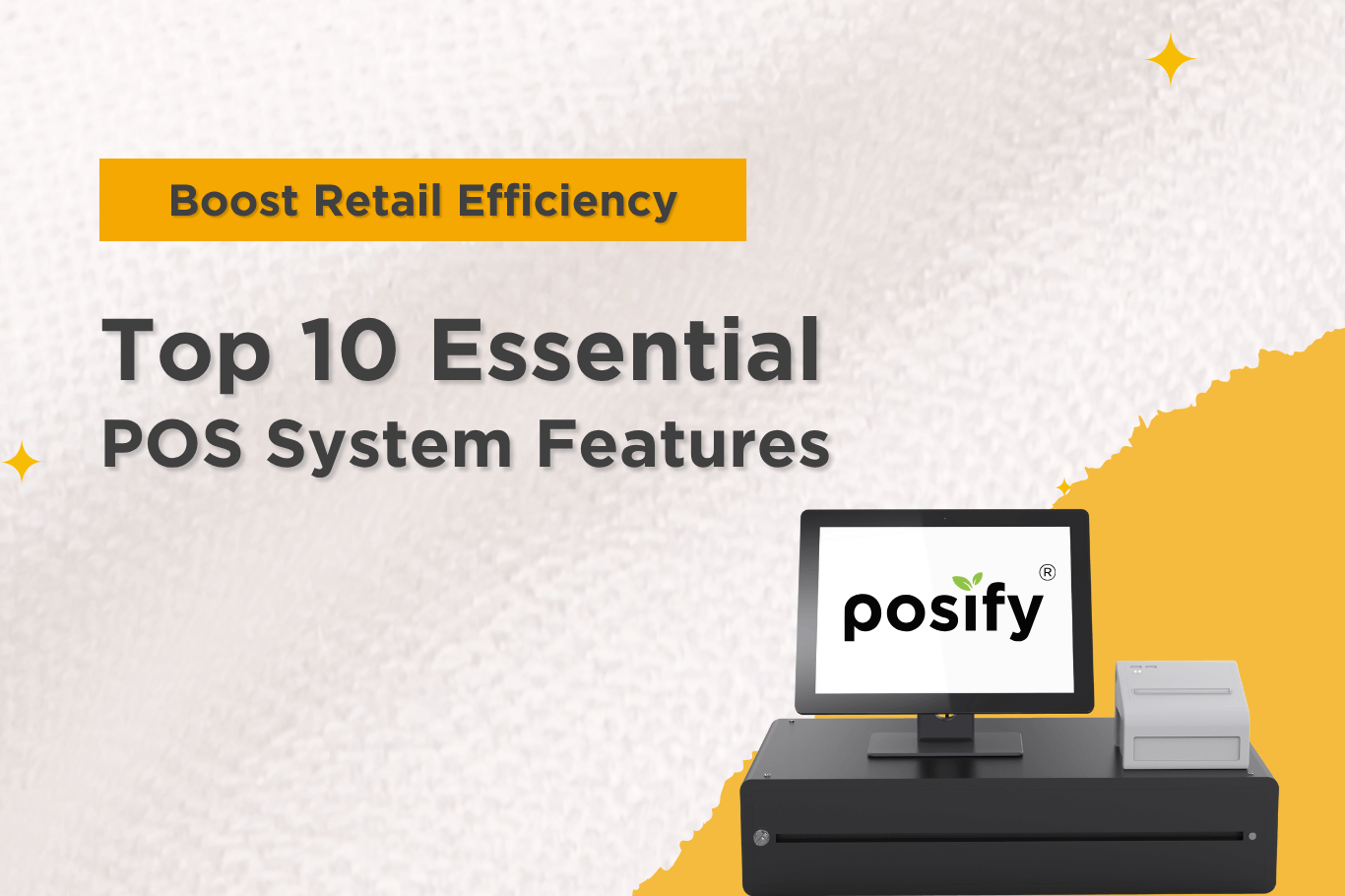Top 10 Essential POS System Features to Boost Retail Efficiency

For modern retailers, a POS (Point of Sale) system has long surpassed the role of a traditional cash register. It not only handles transaction processing but also serves as the data hub for store management, operational automation, and customer engagement.
A well-designed POS system should effectively boost overall retail efficiency, reduce operating costs, and enhance the customer experience. Below, we explore 10 essential POS system features to help you choose the best solution for your business.
Essential POS Feature 1: User-Friendly Interface
In the fast-paced retail environment, operational efficiency often determines the quality of customer service. A great cloud-based POS system should feature an intuitive and easy-to-navigate interface. A well-designed interface that clearly displays product categories, transaction flows, and frequently used functions allows employees to operate the system effortlessly, even during peak hours, ensuring a smooth checkout experience.
For industries with high staff turnover, such as retail and food service, a low learning curve POS system is especially valuable. When employees can learn quickly and perform transactions efficiently, it not only enhances customer satisfaction but also helps maintain steady operations during busy periods.
Essential POS Feature 2: Real-Time Inventory Management
Real-time inventory updates are key to effective retail management. Integrated with barcode scanners, a POS system can instantly record sales activity and automatically trigger restock alerts. It should also support product variant management (e.g., size, color) to prevent confusion and loss from mismanaged stock.
If you manage multiple stores, your POS system should also support cross-location synchronization. This allows you to view each store’s inventory status from a single backend dashboard, avoiding both stockouts and overstocking. With accurate inventory data, retailers can make smarter purchasing and allocation decisions—reducing pressure and losses from excess stock.
Essential POS Feature 3: Multiple Payment Options for Diverse Customer Habits
Today’s consumers use a variety of payment methods, and cash is no longer dominant. A top-tier POS system should support credit cards, mobile payments (such as Apple Pay, Google Pay), e-wallets, and NFC contactless payments. Smooth, fast, and flexible payment options ensure customer satisfaction and reduce checkout wait times.
.png)
Essential POS Feature 4: Cloud-Based Backend and Mobile Accessibility
With the rise of cloud technology, traditional POS systems tied to fixed computers are becoming obsolete. A cloud-supported POS system allows managers to access real-time sales data, employee performance, and reports from anywhere with an internet connection.
Even better, systems that support tablets or mobile devices empower frontline employees with greater flexibility, faster transactions, and improved customer service. For chain stores and multi-location operations, cloud functionality is now an essential standard.
Essential POS Feature 5: Customer Management and Loyalty Programs (CRM)
Modern POS systems should include integrated CRM functions—recording customer purchase history, preferences, and repurchase behavior for personalized marketing and remarketing. Loyalty programs such as point systems, member discounts, and automated birthday rewards enhance customer retention and brand loyalty.
Essential POS Feature 6: Smart Sales Reports and Analytical Dashboards
Data-driven decision-making is at the heart of modern retail management. A robust POS system should provide clear sales reports and real-time dashboards, allowing business owners to quickly view daily revenue, best-selling products, average transaction values, and return rates. With these analytics, retailers can make strategic, data-backed decisions to optimize product mixes and pricing strategies.
Essential POS Feature 7: Employee Management and Access Control
Effective employee management includes tracking attendance, monitoring sales performance, and assigning specific access permissions based on roles. This not only ensures data security but also prevents unauthorized system operations—facilitating operational analysis and workforce optimization.
[Posify POS System Switching Promotion] Buy 2 years, get 2 years free + 25% off — No transaction fees! Fully integrates your online and in-store sales!
Essential POS Feature 8: Offline Mode for Uninterrupted Operations
Even if the internet goes down, your POS system should continue functioning offline and automatically sync data once the connection is restored. This is crucial for markets, pop-up stores, and locations with unstable networks—ensuring business continuity and preventing customer loss.
Essential POS Feature 9: E-Commerce Integration and OMO Support
The line between physical retail and online shopping continues to blur. Successful retailers now embrace the OMO (Online Merge Offline) model.
A POS system that integrates with major e-commerce platforms can automatically sync orders, inventory, and customer data—enabling true omnichannel retailing.
Support for features like online ordering with in-store pickup (BOPIS) further enhances customer convenience and retention.
Essential POS Feature 10: API Flexibility and Third-Party Integration
A great POS system should not exist in isolation—it should function as a central hub that connects seamlessly with other software tools.
Whether it’s ERP, CRM, loyalty programs, or accounting software, a POS with robust API capabilities can integrate quickly with third-party apps—accelerating digital transformation.
This flexibility is especially vital for growing retail brands, enabling continuous upgrades and avoiding duplicated investments or data silos.
Conclusion: The POS System Is the Central Nervous System of Retail Operations
In the wave of retail digitalization, the POS system has evolved from a checkout tool into the core hub connecting customer experiences, internal operations, and data-driven decision-making.
Choosing a POS system with the 10 essential features above will streamline your daily operations and lay a strong foundation for brand expansion and transformation.
The wrong POS can lead to inefficiency, data gaps, and poor customer experiences—while the right one can help you stand out in a competitive market. As consumer behavior continues to evolve, only retailers that strengthen efficiency and data insights can remain agile and resilient.
Whether you’re running a single boutique or managing a multi-store chain, choosing a POS system truly “built for retail” is a crucial step toward success.
Posify understands every challenge faced by retailers. Our intelligent POS solution isn’t just feature-rich—it’s built to truly understand retail. Combining cloud technology, multi-platform integration, intuitive design, and powerful scalability, Posify empowers retailers to build the ideal operational tool for their needs.
Upgrade your store efficiency today — let Posify be your trusted partner in retail growth.






